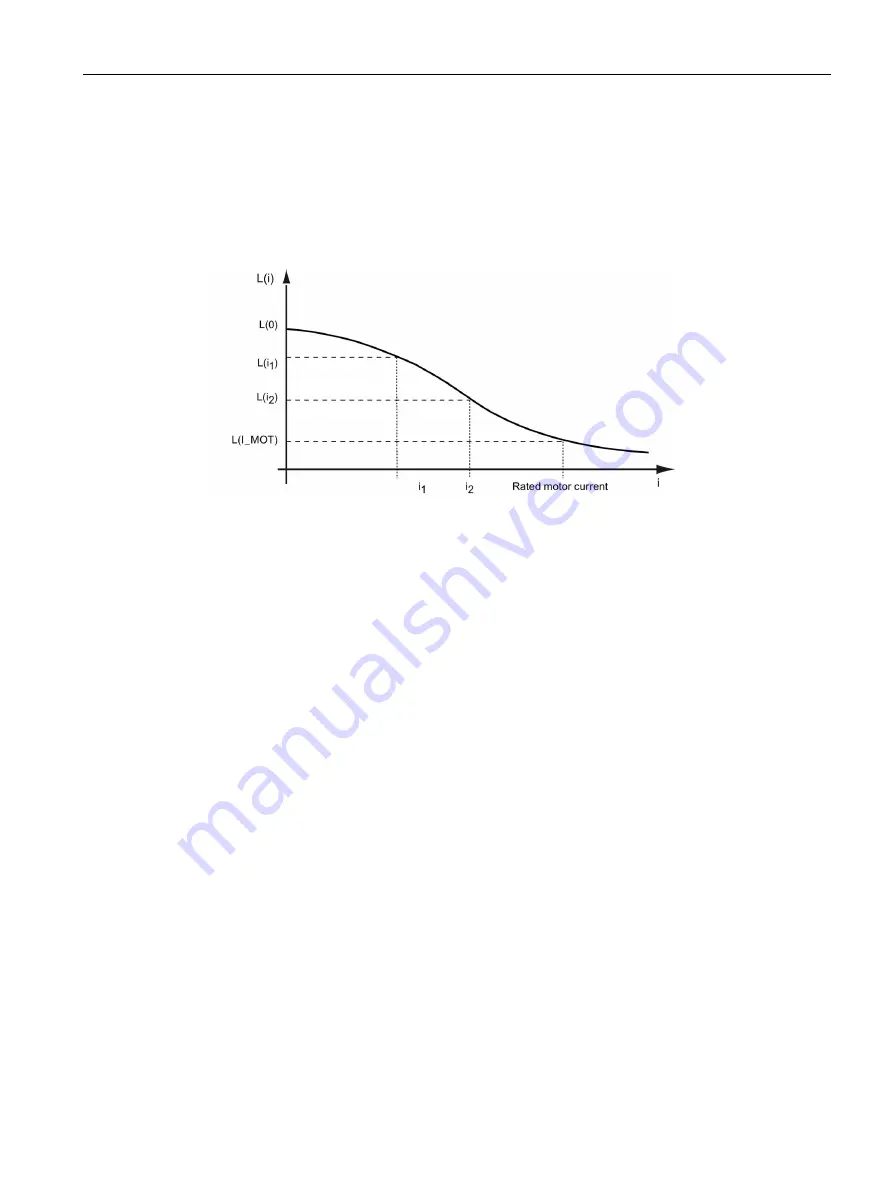
Descriptions of functions
10.15 Adaptation of the armature and field current controller
SINAMICS DCM DC Converter
Operating Instructions, 12/2018, A5E34763375A
573
2. Non-linearity of the load inductance (= armature circuit or field circuit of the motor):
At higher currents, both the armature winding as well as the field winding – or also when
there is a smoothing reactor available in the armature circuit, can go into the magnetic
saturation range; as a consequence, they can have a significantly lower inductance than at
low currents.
The inductance as a function of the current is modelled according to the following diagram:
Inductance at a very low current:
L(0) = p50111 (La) or p50116 (Lf)
Inductance at the rated motor current:
L(I_Mot) = p50111×p51591 (La×
λ
a
) or p50116×p51597 (Lf×
λ
f
)
Effect of the adaptation
The SINAMICS DCM converter provides the option of adapting the gain of the armature
current controller or the field current controller to the existing non-linearities:
Compensating gating unit non-linearities:
The controller gain is normally set so that in the range of the largest controlled system gain
(i.e. where the armature is in the discontinuous current range or for the field, with a firing
angle of 90°) the required control behavior is obtained. For other currents, the current
controller becomes appropriately slower. When the current controller adaptation is activated,
the current controller gain is increased inversely proportional to the controlled system gain.
As a consequence, the controller behavior is approximately the same at any current.
Compensating non-linear inductances
The controller gain is normally set so that at a high current, the required control behavior is
obtained. At low currents, the current controller becomes appropriately slower. When the
current controller adaptation is activated, the current controller gain is increased
proportionally to the inductance. As a consequence, the controller behavior is approximately
the same at any current.
















































